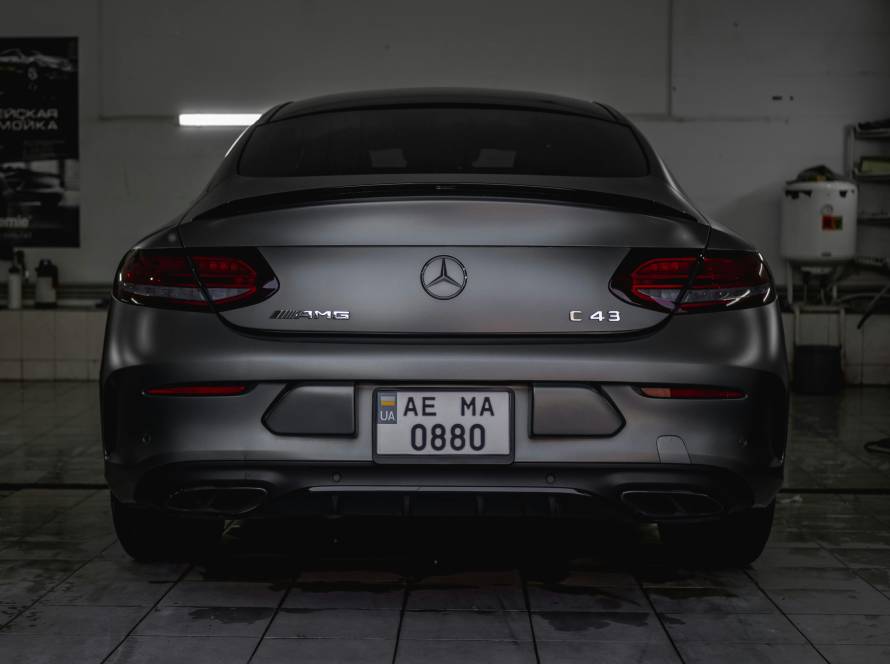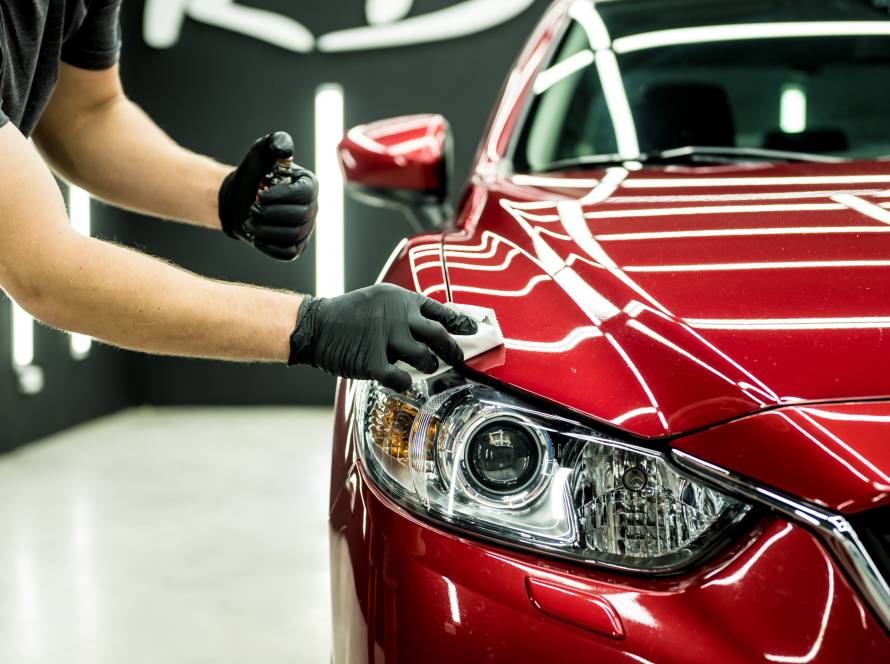What Is Paint Protection Film?
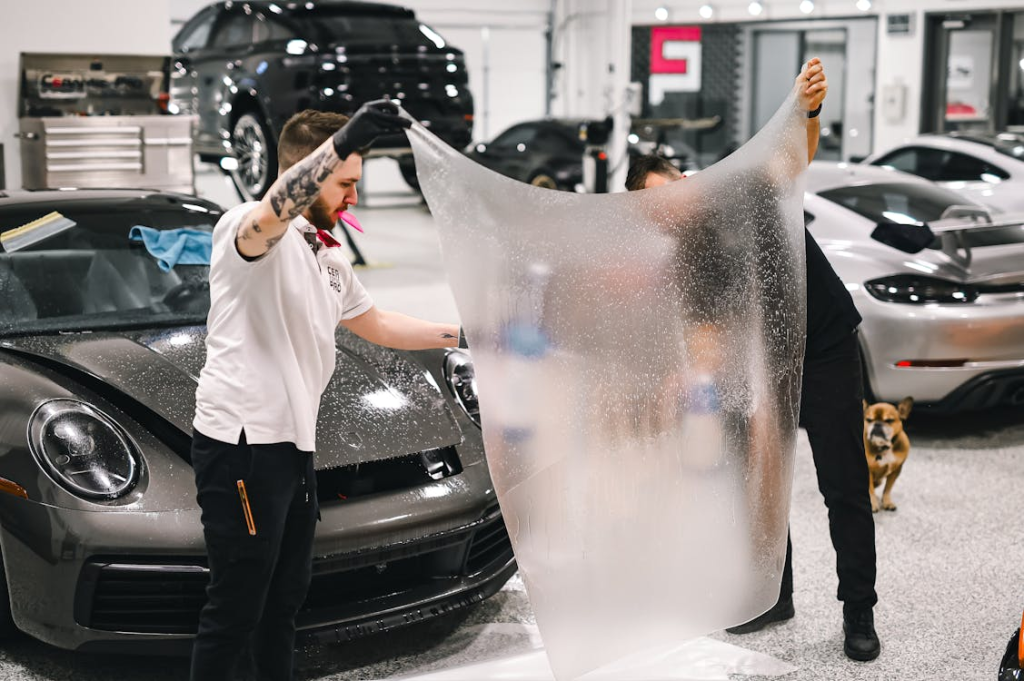
As someone who loves their car and wants to keep it looking new, I’ve turned to paint protection film, or PPF, as a reliable solution. Also known as Clear Bra, this transparent, thin film is made from urethane and acts as a shield for the car’s paint. It protects against light scratches, rock chips, and chemical damage.
The film is straightforward to apply and complements the ceramic coating, adding another protection layer. Together, they safeguard the car from various kinds of damage, ensuring it stays in excellent condition. Whether driving around town or hitting the highway for a road trip, paint protection film helps keep my car looking pristine.
Benefits of PPF
One of the standout features of the paint protection film is how it enhances my car’s paint job. This film gives my vehicle’s appearance a more polished look and offers a formidable protective barrier against harsh chemicals and corrosion. What’s impressive is that PPF has self-healing properties. If there are any minor scratches or light swirls, they can disappear with just a bit of heat.
Another massive benefit of paint protective film is its hydrophobic top coat, which effectively repels water and other liquid chemicals. I needn’t worry about rain or spills sticking to my car and causing damage. Compared to other methods like ceramic coating or waxing, PPF is much easier to handle. It’s less messy to apply, and there’s no risk of leaving behind adhesive marks or that dreaded orange peel finish you can get with other products.
How PPF Works
Paint protection film acts like invisible armor for my car. This amazing film creates a strong barrier that guards the vehicle’s paint against UV rays, minor scratches, and even the relentless spray of stone chips from the road. I also learned that the hydrophobic properties of PPF, which repel water and dirt, are inspired by advancements in materials science, similar to the natural super hydrophobic surfaces discussed in scientific studies. What’s truly fascinating about PPF is how it absorbs impacts. Whenever stones, pebbles, or other bits of road debris strike the car, the film absorbs the impact, protecting the paint underneath from damage.
The Science Behind Paint Protection Film
But how does it manage all this? Well the paint protection film is made from a type of plastic called urethane. I found out from RubCorp.com that this compound is really tough but also incredibly flexible. This flexibility allows it to absorb shocks without breaking or tearing. Plus, paint protection film has a super cool feature known as self-healing properties. This means that minor scratches can actually disappear on their own with just a little heat from the sun or an engine. It’s like watching a small scratch magically heal itself!
Installation Process and Considerations
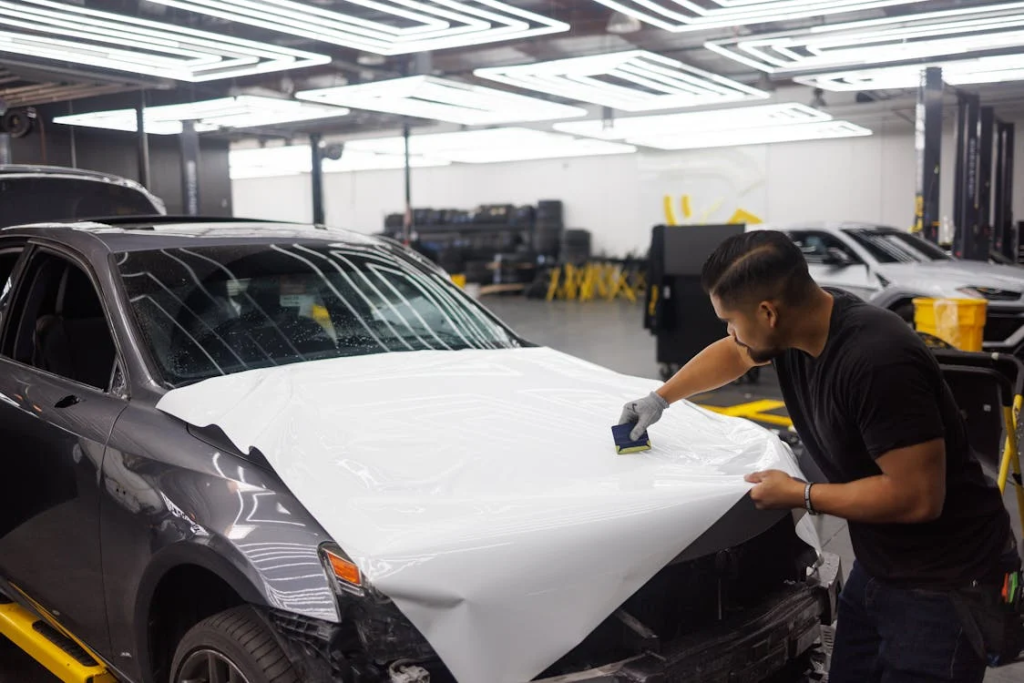
Installing paint protection film on my car was easier than I thought, but it was still a detailed process that required precision and care. The installation involves several stages, including fitting the film precisely to specific car panels, such as the hood, bumpers, and side mirrors. Next, the film is meticulously cut to ensure it fits perfectly without overlapping or short edges.
Once cut, the film is carefully placed on the car’s paint. This step requires a calm hand and a keen eye to ensure the film sits just right. The final step is activating the film, which involves a special liquid spray that helps it adhere smoothly to the car’s exterior. This liquid also helps eliminate any air bubbles, ensuring the film’s surface is flawless.
Expertise in Applying Paint Protection Film
The key to a successful paint protective film application is the expertise of professional installers who combine speed with patience. They know how to handle the film to prevent swirls, wrinkles, or imperfections. Their skill ensures that the protective layer guards against rock chips, bird droppings, and UV rays and enhances the car’s appearance with a lustrous sheen.
For any car owner considering paint protection film, it’s crucial to use experienced professionals to avoid costly mistakes and ensure that the film provides ultimate protection without compromising the vehicle’s finish. This attention to detail during installation makes all the difference in how well the PPF performs and lasts over time.
PPF vs. Ceramic Coating
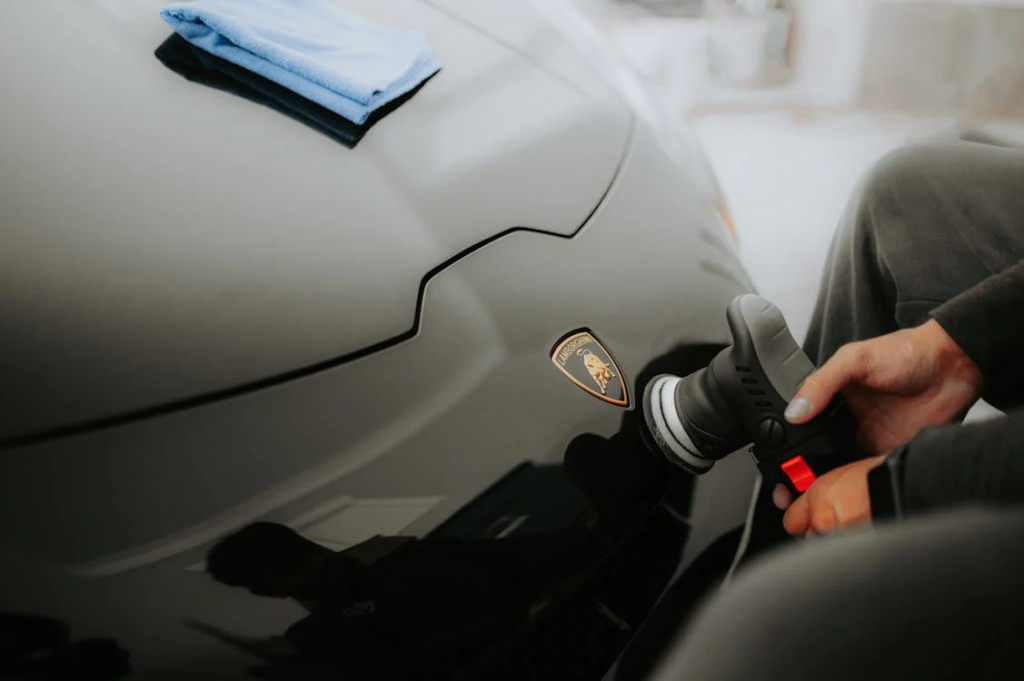
Paint protection film (PPF) and ceramic coating serve different protective purposes for my car. PPF is particularly effective against physical damage, safeguarding the vehicle from chips, scuffs, and scratches caused by road debris, such as stones and pebbles. This level of protection is essential for keeping the car’s exterior in pristine condition and free from common damages.
Ceramic coating, meanwhile, excels in aesthetics and maintenance. It adds a glossy sheen that enhances the car’s appearance and features water-repellent properties, making cleaning easier by repelling dirt and grime. While ceramic coating offers some protection against minor surface wear, it doesn’t shield against heavier impacts as paint protection film does. For comprehensive defense against the elements and physical damage, combining both treatments can provide the ultimate care for any vehicle.
Choosing the Right Paint Protection Films
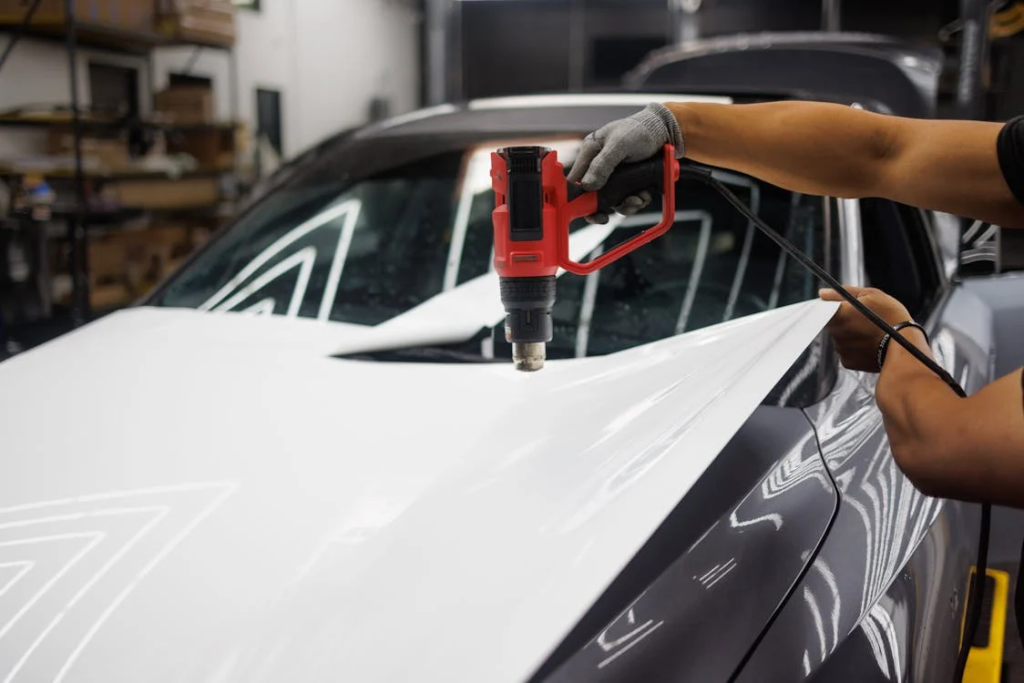
Several factors are considered when I pick out a paint protection film for my car. First, how I use my car matters; whether I drive on rough roads or mostly stick to city streets can determine what type of PPF I need. I also consider what I like personally—some films have features that are more about looks, while others are all about protection.
It’s important to choose a paint protection film with a good reputation and a warranty covering things like cracking or color change. These warranties help ensure I won’t have to pay out of pocket if something goes wrong. I also look for the film’s ability to fix itself when it gets minor scratches.
Maintaining Your Car’s PPF
Keeping the paint protection film on my car in good shape is key to making it last. Regular maintenance and checking up on the PPF are essential. I follow the manufacturer’s care instructions closely to ensure I’m using the right products that won’t harm the film. It’s all about using the right cleaners to keep the PPF looking new without damaging it.
I also look for signs of wear, such as discoloration, yellowing, cracking, or peeling. These can be early warnings that something is wrong. Catching these signs helps me anticipate any significant problems that could affect the PPF’s protective abilities.
Combining PPF with Ceramic Coating
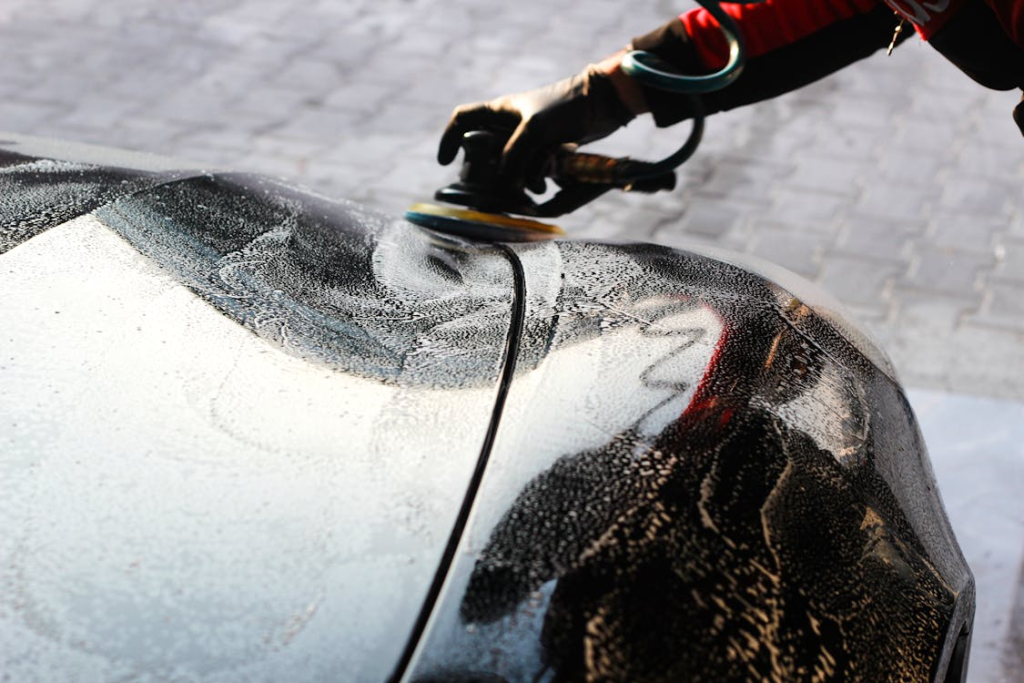
Adding paint protection film with ceramic coating to my car has really enhanced its protection. The PPF already helps keep the vehicle safe from scuffs, stone chips, and light scratches, and it helps keep the paint looking good. However, adding the ceramic coating made things even better.
The ceramic coating adds a shiny look that makes my car stand out more and brings water-repellent features that make cleaning easier. Now, water and dirt just roll right off, which means I don’t have to wash it as often. Using both paint protection film and ceramic coating together protects my car from all kinds of things like strong sunlight and road dirt, making sure the paint stays looking new and fresh. This mix not only makes the car look better but also strengthens its protection for a long time.
Common Misconceptions About PPF
A lot of people think all paint protection films are the same, but that’s not true. Some types of paint protection film are definitely better than others. It’s important for car owners like me to know what to look for when choosing the best paint protection film. High-quality paint protection film should have excellent clarity to ensure it doesn’t alter the look of the paint, strong durability to resist scratches and dents, and outstanding self-healing properties that can mend minor scratches and swirls on its own.
Besides understanding the different qualities of PPF, I also realized that professional nano ceramic coatings can provide superior protection. These coatings add a glossy finish and have excellent water-repellent properties that make cleaning the car much more manageable.
Where to Buy PPF
Finding the right place to buy paint protection film for my car was easier than I thought. Across the United States, there’s a large network of PPF installers who are trained and equipped to apply the film correctly. These professionals make sure that the PPF is applied without any bubbles or imperfections, which is crucial for protecting my car’s paint job.
Besides professional installers, paint protection film is also available through authorized dealers who offer high-quality films. I also found that many online retailers sell PPF, which gave me the option to look at different brands and types from the comfort of my home. Whether buying in-store or online, I made sure to choose a reputable seller that offers warranties and good customer support, ensuring that I get the best protection for my vehicle.
The Importance of Protecting Car Paint
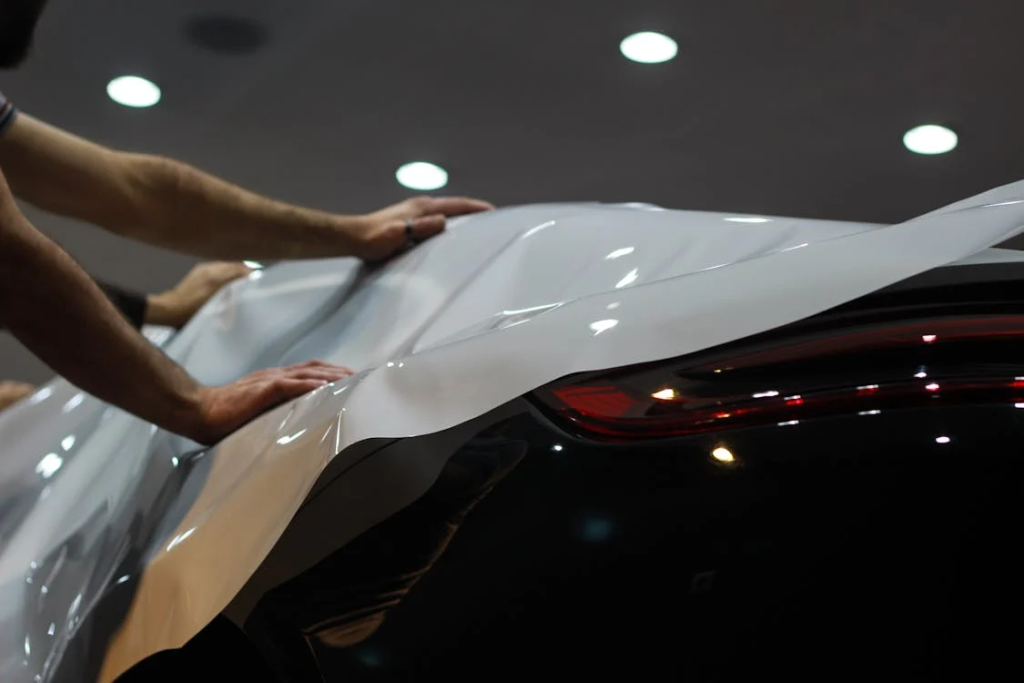
Protecting my car’s paint is crucial. Not only does paint protection film shield the paint from environmental damages like UV rays, road salt, and acid rain, but it also enhances the car’s shine. This kind of protection helps to keep the paint looking as good as new, which is especially important if I ever decide to sell my car.
The benefits of paint protection film go beyond just keeping the car looking great; it also has a significant impact on the resale value. A well-maintained paint job can make a huge difference in how much I can get for my car later on.
Environmental Benefits of PPF
Putting paint protection film on my car does more than just keep it looking nice; it’s also good for the environment. PPF cuts down on how often I need to repaint my car. Car paint has a lot of chemicals, and not having to repaint so much means fewer of those chemicals get used, which is better for the planet.
PPF protects my car from things like acid rain and road salt, too. These can mess up the paint over time, and fixing that damage usually involves harsh chemicals. With PPF, my car’s paint stays safe from these pollutants, which means I don’t need those strong chemicals to clean or fix the paint.
DIY vs. Professional PPF Installation
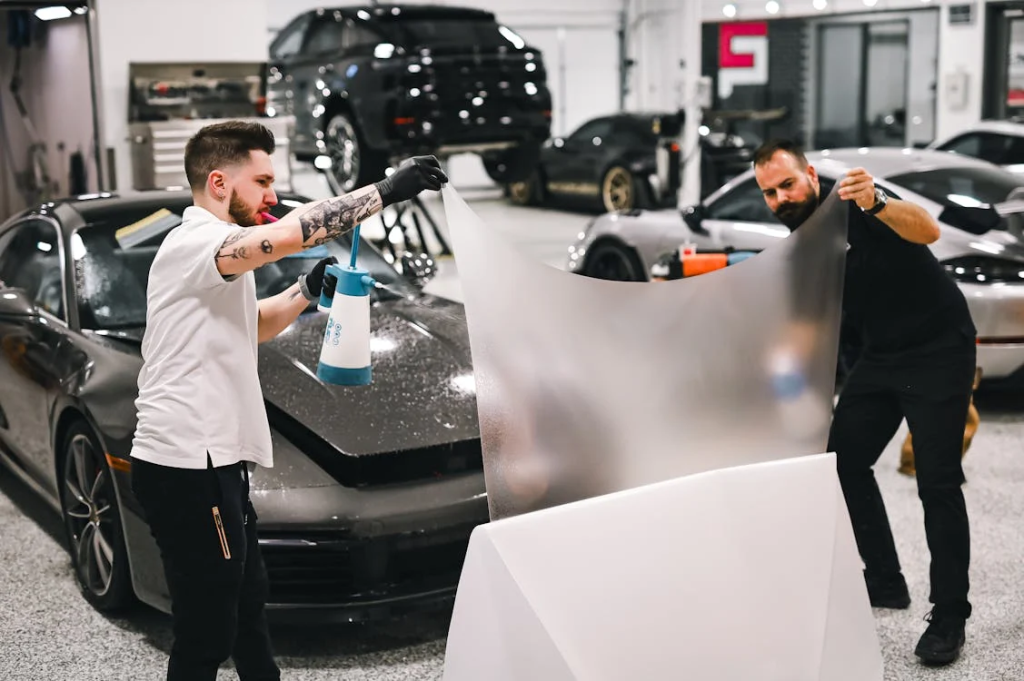
Installing paint protection film on my car was a big decision, especially when deciding whether to do it myself or hire a professional. Going the DIY route could save me some money upfront, but it also came with risks. The cost of tools and the chance of making mistakes that could ruin the film or damage my car’s paint made me think twice. The quality of a DIY job often can’t match that of a skilled professional who has the right tools and experience to ensure the PPF is applied perfectly.
Professional installation might cost more, but the benefits are clear. Pros have the skills to apply the PPF without bubbles or misalignments, and they often provide warranties that wouldn’t be available with a DIY job. These warranties cover issues like peeling or discoloration, giving me peace of mind that my investment is protected. Knowing that any potential problems could be fixed without extra costs convinced me that professional installation was worth the additional expense for long-lasting protection and peace of mind.
PPF Longevity and Value Over Time
Paint protection film is a great way to keep my car looking new. Typically, PPF can last anywhere from five to ten years, depending on several factors. How long it lasts really depends on how I use my car and where I live. For example, vehicles in harsh climates with lots of sun or snow might see their paint protection film wear out faster than in milder areas.
The way I take care of the PPF also makes a big difference. Regular maintenance – like keeping the car clean and gently treating the PPF during washes – helps extend its life. Making sure not to scrub the film too hard and using the right cleaning products can prevent damage like peeling or yellowing.
Summarizing
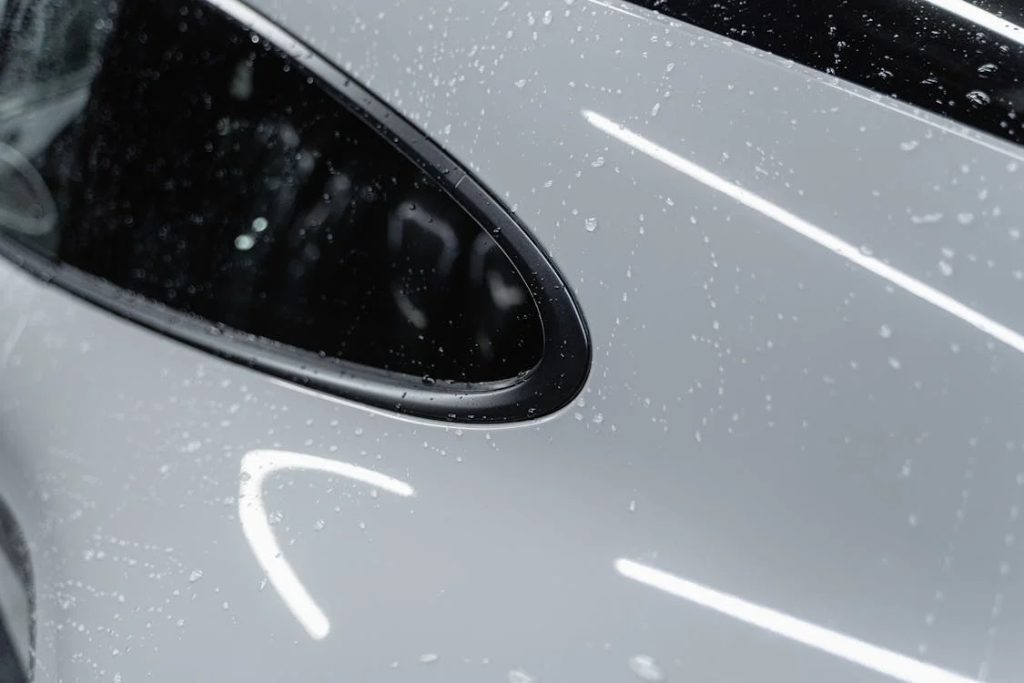
Deciding whether to install paint protection film on my car came down to my priorities and expectations. PPF offers unmatched protection against scratches, minor damage, and wear and tear from everyday use. For me, this made it the perfect choice to keep my car looking its best.
On top of the protection, PPF also gives my car a polished, showroom-like finish that lasts for years. It helps maintain the same fresh appearance it had when I first bought it, which is not only satisfying to see but also a smart way to preserve its value over time. For anyone who values their car’s looks and longevity, PPF is a solid investment.

